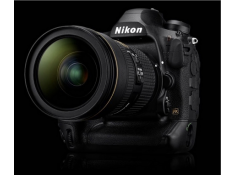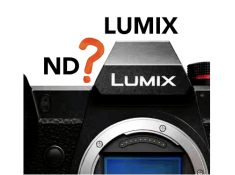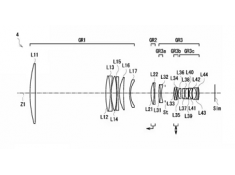7 Best Zoom Camera 2025:Best For Wildlife And Sports Photography
Wednesday 24 April 2024
 5.7k
5.7k
 Reproduction without the author's authorization is prohibited
Reproduction without the author's authorization is prohibited
What Is Zoom Camera
A "zoom camera" is basically a digital camera with a special lens that lets you zoom in on faraway things or zoom out for a wider view without having to physically move closer or step back. You'll find these cameras all over the place, from small ones you can carry in your pocket to more advanced models.
Zooming in cameras comes down to two main types:
Optical Zoom
This zoom works by physically adjusting the lens inside the camera. It's like using binoculars – you get a closer look without losing image quality. They usually mention this as "X" (like 3x or 10x zoom), showing you how much closer you can get to your subject.
Digital Zoom
This zoom is a bit different. It enlarges the picture digitally after the camera captures it. While it can make things seem closer, the downside is it can make the picture look a bit fuzzy or less clear.
Zoom cameras can be really different in terms of what they offer:
Compact Zoom Cameras
These are small and handy, great for everyday use since they easily fit in your pocket or bag. They might not zoom in as much, but they're perfect for regular photos.
Superzoom/Ultra-zoom Cameras
These are like the superheroes of zoom cameras! They have lenses that can zoom in a lot, from 20 times closer to even 50 times closer or more. They're loved by photography enthusiasts because they offer manual controls and extra features for more creative shots.
Bridge Cameras
Think of these as a bridge between basic and advanced cameras. They don't let you change lenses like fancy cameras do, but they have bigger bodies, manual controls, and powerful built-in zoom lenses. This makes them great for all sorts of photography situations.
So, when you hear "zoom camera," remember it covers a wide range of cameras with different zoom abilities and features. The key is to think about what you want to do with your camera and pick one that fits your needs best.
7 Best Zoom Camera 2024
Sony RX10 IV:
This camera is renowned for its all-in-one versatility, featuring a 20.1MP 1-inch sensor, a high-quality Zeiss Vario-Sonnar T* 24-600mm f/2.4-4 zoom lens, fast autofocus (0.03 seconds), continuous shooting up to 24 fps, and 4K video recording with full pixel readout and no pixel binning.
Sensor Size: 1-inch type (13.2 x 8.8 mm)
Zoom: 25x optical zoom (24-600mm equivalent)
Launch Time: Released in September 2017
Reasons to Buy: High-quality lens with a wide zoom range, fast autofocus, 4K video recording, excellent build quality.
Reasons to Not Buy: Higher price point, might be bulkier for some users.

Kodak Pixpro AZ528:
Offering a 16.15MP 1/2.3-inch sensor, a 24-1248mm equivalent lens with 52x optical zoom, optical image stabilization, Full HD 1080p video recording, manual shooting modes, and a compact and lightweight build, the AZ528 is designed for easy handling and versatile shooting.
Sensor Size: 1/2.3-inch type (6.17 x 4.55 mm)
Zoom: 52x optical zoom (24-1248mm equivalent)
Launch Time: Released in 2016
Reasons to Buy: Decent zoom range, manual controls, affordable price point.
Reasons to Not Buy: Older model, limited advanced features compared to newer models.

Canon PowerShot SX70 HS:
Featuring a 20.3MP 1/2.3-inch sensor, a 65x optical zoom lens (21-1365mm equivalent), DIGIC 8 image processor for fast performance, 4K UHD video recording, a vari-angle LCD screen, built-in Wi-Fi and Bluetooth, and a comfortable grip for extended shooting sessions.
Sensor Size: 1/2.3-inch type (6.17 x 4.55 mm)
Zoom: 65x optical zoom (21-1365mm equivalent)
Launch Time: Released in October 2018
Reasons to Buy: Impressive zoom range, 4K video recording, articulated LCD screen.
Reasons to Not Buy: Limited low-light performance due to sensor size, bulky design.

Nikon Coolpix P1000:
It boasts a 16MP 1/2.3-inch sensor, an astounding 125x optical zoom NIKKOR lens (24-3000mm equivalent), Dual Detect Optical VR, RAW support, 4K UHD video recording, and an intuitive control layout for easy handling.
Sensor Size: 1/2.3-inch type (6.17 x 4.55 mm)
Zoom: 125x optical zoom (24-3000mm equivalent)
Launch Time: Released in September 2018
Reasons to Buy: Extreme zoom capabilities, 4K video recording, useful for wildlife and sports photography.
Reasons to Not Buy: Large and heavy, smaller sensor affects image quality in low light.

Nikon Coolpix P950:
This camera offers an 83x optical zoom NIKKOR lens (24-2000mm equivalent), a 16MP 1/2.3-inch sensor, 4K UHD video recording, a vari-angle LCD screen, RAW support, SnapBridge connectivity, and a comfortable grip for stable shooting.
Sensor Size: 1/2.3-inch type (6.17 x 4.55 mm)
Zoom: 83x optical zoom (24-2000mm equivalent)
Launch Time: Released in January 2020
Reasons to Buy: Long zoom range, 4K UHD video recording, ergonomic design.
Reasons to Not Buy: Limited improvement over the P900 (its predecessor), smaller sensor size.

Sony Cyber-shot DSC-RX100 VII:
Known for its premium compact design, it features a 20.1MP 1-inch sensor, a versatile 24-200mm equivalent zoom lens, fast Hybrid AF system, Real-time Tracking and Eye AF, 20 fps continuous shooting, 4K video recording with S-Log3, and a pop-up OLED electronic viewfinder.
Sensor Size: 1-inch type (13.2 x 8.8 mm)
Zoom: 8.3x optical zoom (24-200mm equivalent)
Launch Time: Released in July 2019
Reasons to Buy: Compact size with premium features, high-quality images, fast autofocus, 4K video recording.
Reasons to Not Buy: Limited zoom range compared to others on the list, higher price point.

Canon PowerShot SX740:
With a 20.3MP 1/2.3-inch sensor, a 40x optical zoom lens (24-960mm equivalent), DIGIC 8 image processor, 4K UHD video recording, 10 fps continuous shooting, built-in Wi-Fi and Bluetooth, and a compact design suitable for travel and everyday shooting needs.
Sensor Size: 1/2.3-inch type (6.17 x 4.55 mm)
Zoom: 40x optical zoom (24-960mm equivalent)
Launch Time: Released in August 2018
Reasons to Buy: Decent zoom range in a compact body, 4K video recording, affordable price.
Reasons to Not Buy: Limited low-light performance, smaller sensor size.
How do I choose the best zoom camera?
To choose the best zoom camera, start by defining your photography needs and preferred shooting scenarios, whether it's wildlife, sports, landscapes, or travel photography. Consider the sensor size for better image quality, with 1-inch sensors striking a balance between quality and portability. Evaluate the optical zoom range based on your distance requirements and look for optical image stabilization to reduce blur. Check for features like 4K video, advanced autofocus, and connectivity options while balancing the camera's size and portability. Read reviews, compare user feedback, and test cameras hands-on to assess real-world performance and usability. Set a budget and prioritize features accordingly to find the best match for your needs and preferences.
Which One Is The Best Zoom Camera 2024
Choosing the "best" camera depends on your specific needs and priorities in photography. However, I can highlight a few standout options based on different criteria:
Best for Zoom: Nikon P1000
It offers an exceptional zoom range, especially suited for capturing distant subjects like wildlife or celestial objects.
Best Overall Performance: Sony RX10 IV
Known for its versatile zoom range, fast autofocus, excellent image quality due to a 1-inch sensor, and overall solid performance across various shooting scenarios.
Best Budget-Friendly Option: Kodak Pixpro AZ528
Provides decent zoom capabilities at an affordable price, suitable for casual photographers looking for a budget-friendly option.
Best Compact and Advanced Features: Sony Cyber-shot DSC-RX100 VII
Offers a compact size, advanced features, excellent image quality with its 1-inch sensor, and impressive overall performance despite a more limited zoom range.
Consider your priorities such as zoom needs, budget, desired features, and portability when selecting the best camera for your purposes. Each of these cameras excels in different areas, so it's crucial to match the camera's strengths with your photography goals.
What should I do if I have an old zoom lens that can’t match my new mirrorless camera?
Many photographers have SLR zoom lenses left over from the old SLR era at home, but due to the update of the mount, they can no longer be used on mirrorless cameras. K&F CONCEPT delivers around 300 types of lens adapter rings, making different sizes of lenses and cameras smoothly compatible. With a professional design and craftsmanship, our lens adapter rings allow professionals to renew old lenses. Staying connected to all your powerful tools has never been this easy.
Conclusion
A bridge camera is a type of digital camera that bridges the gap between compact point-and-shoot cameras and more advanced DSLR or mirrorless cameras. These cameras are designed to offer a balance of advanced features, manual controls, and a versatile zoom range in a single, integrated package.
And I also believe,Sony’s RX100 VII will not have any subsequent models released. The RX's niche (compact, portable point-and-shoot machine) will gradually be replaced by the ZV series.
Even so, buying zoom cameras in 2024 isn't a fool's errand. Compared to the prices of these zoom cameras when they were released, their prices now have dropped. Moreover, most zoom lenses for mirrorless cameras or DSLRs are very expensive and complicated to operate. So if you want to capture wildlife or sports photography at a lower price, zoom cameras are a competitive choice.
Statement: all contents and remarks made by K&F CONCEPT 's intranet friends only represent themselves and do not reflect any K&F CONCEPT 's opinions and views.
-
 Both Nikon and Fujifilm announced that some cameras will be discontinuedThursday 24 April 2025
Both Nikon and Fujifilm announced that some cameras will be discontinuedThursday 24 April 2025 -
 Panasonic LUMIX new camera may be equipped with electronic NDWednesday 23 April 2025
Panasonic LUMIX new camera may be equipped with electronic NDWednesday 23 April 2025 -
 Top 10 Photographers Alive Today and Why They MatterTuesday 22 April 2025
Top 10 Photographers Alive Today and Why They MatterTuesday 22 April 2025 -
 Why Every Photographer Needs the Cleaning ClothFriday 18 April 2025
Why Every Photographer Needs the Cleaning ClothFriday 18 April 2025 -
 Sony's new patent application: covering 800mm F5.6 and 400mmF4Thursday 17 April 2025
Sony's new patent application: covering 800mm F5.6 and 400mmF4Thursday 17 April 2025




